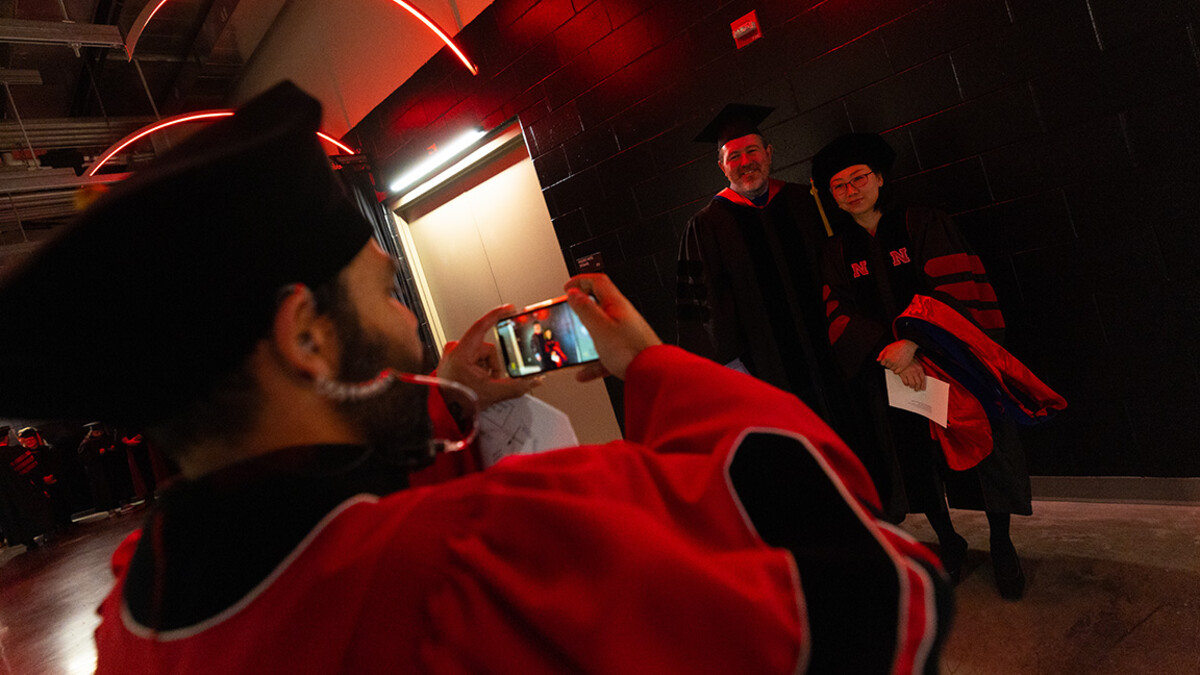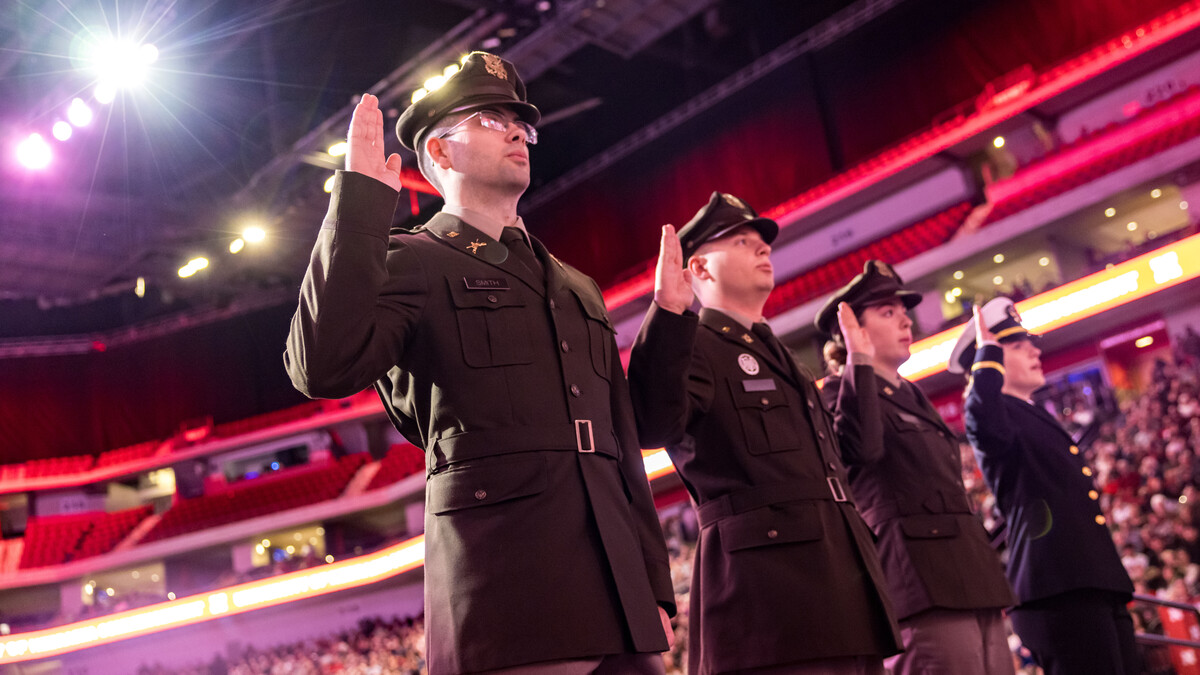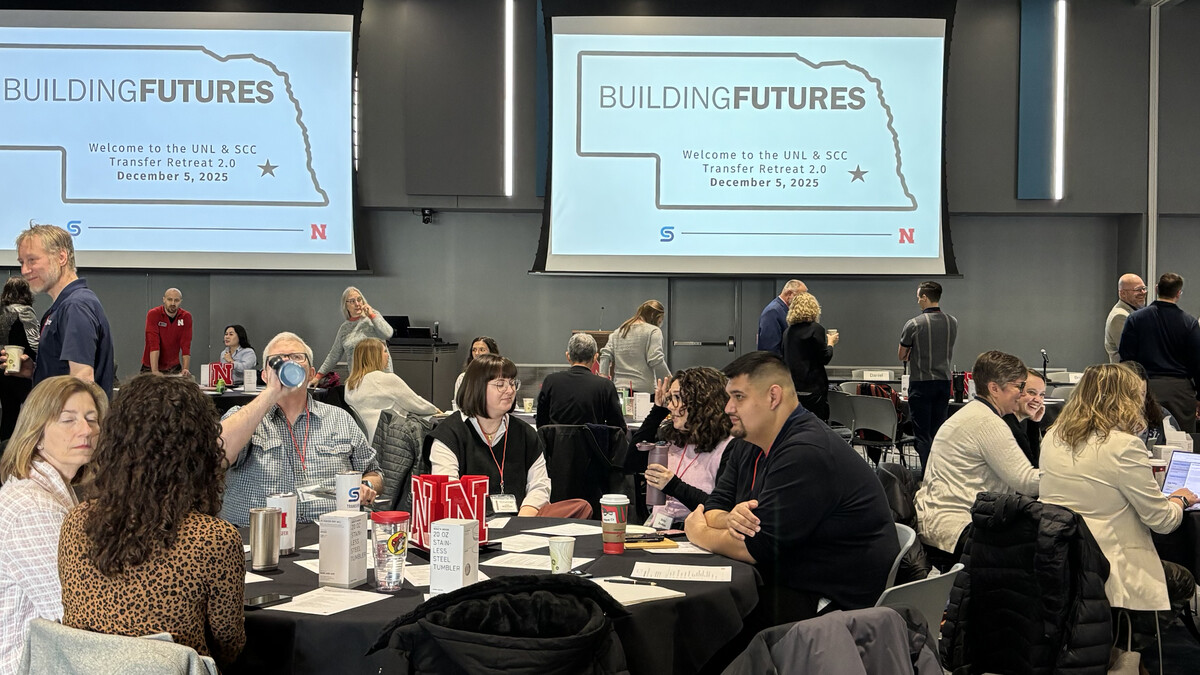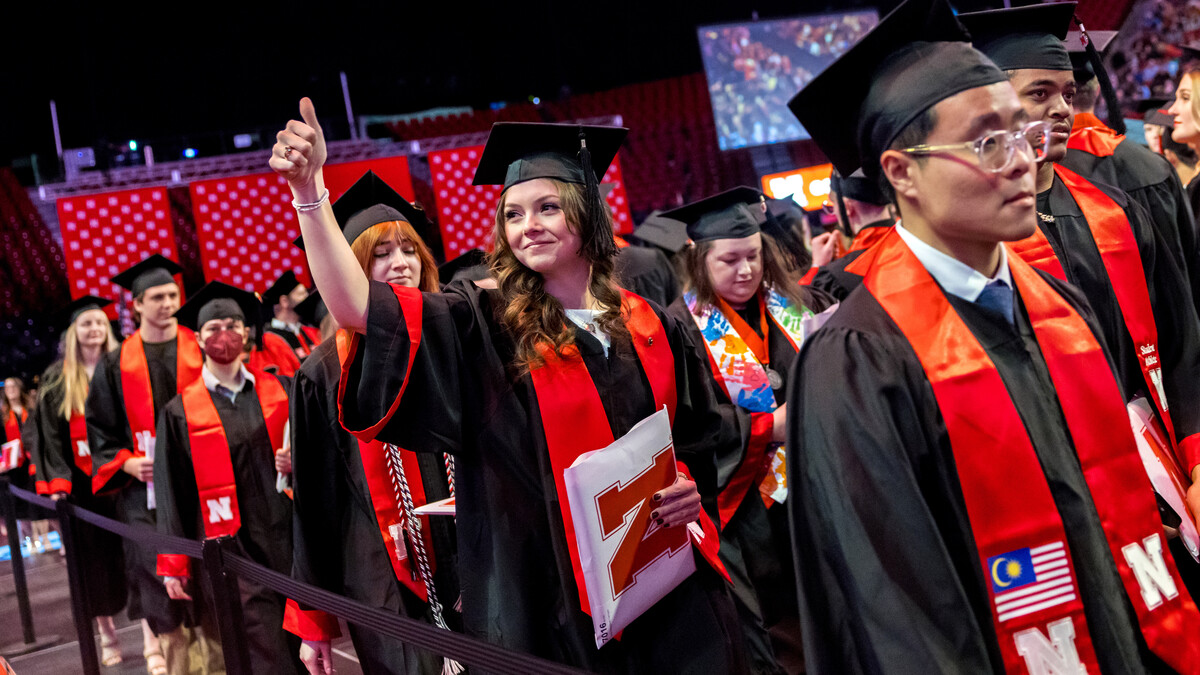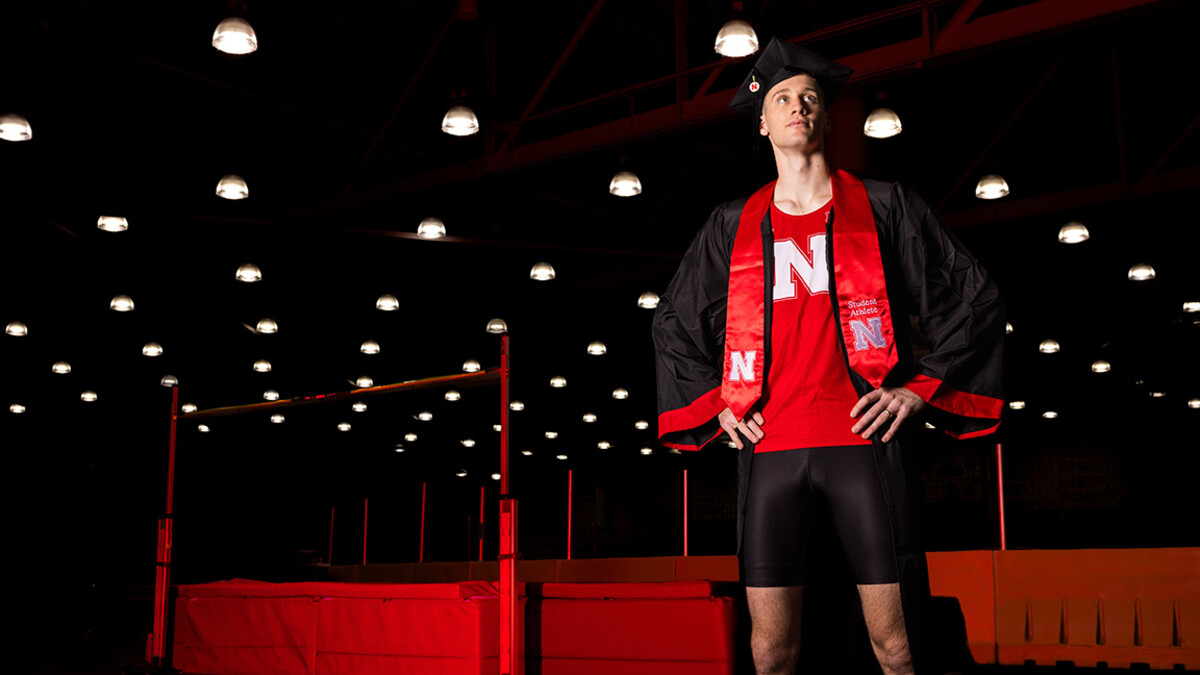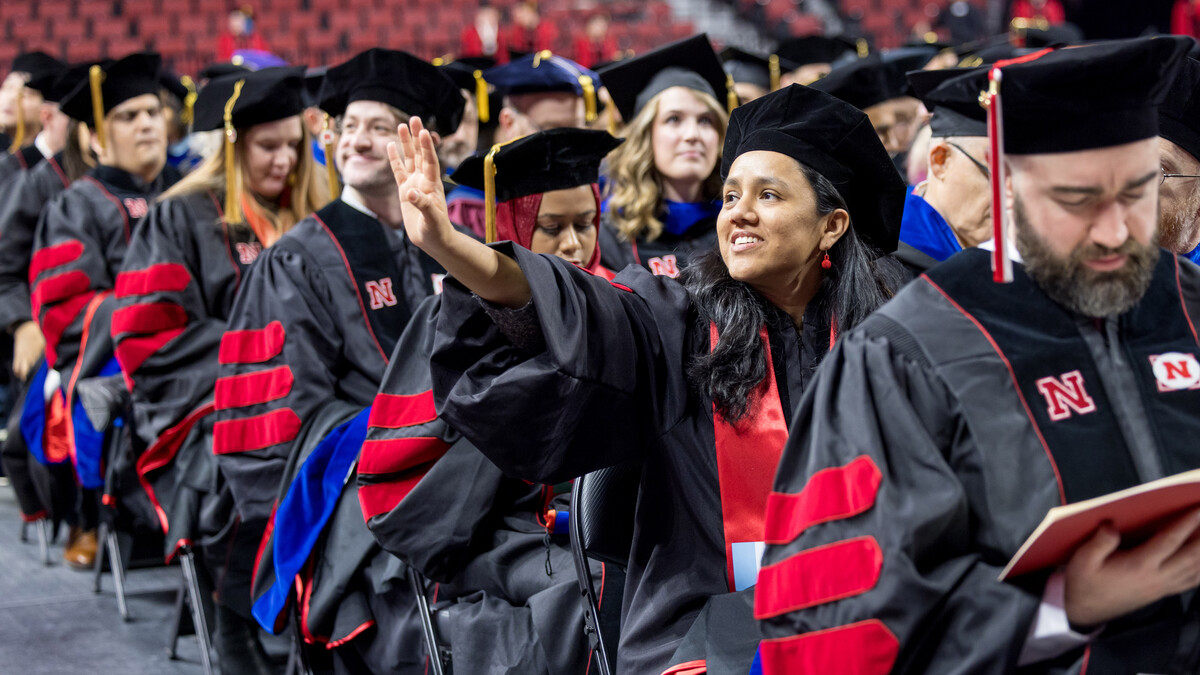
The University of Nebraska–Lincoln is sharpening its vision for the future of research, scholarship and creative activity, discussing research identity and deepening its commitment to community collaboration.
That effort launched May 7, when more than 260 faculty, campus administrators and community leaders gathered at the Nebraska Union for the Research and Innovation Convening, a strategic planning summit led by the Office of Research and Innovation.
“Today is an important day for the future of the university,” Chancellor Rodney D. Bennett said. “I ask that you look past the many challenges we face in higher education and focus on opportunities — opportunities for greater discovery, opportunities for further impact, and opportunities to refine our research identity.”
The daylong summit featured national experts, panel discussions on successful community partnerships, a recording booth allowing faculty to tell their individual research stories, and interactive sessions designed to get faculty thinking beyond traditional research boundaries.
A highlight of the event was the unveiling of a draft framework outlining key research and creative activity conducted by faculty, postdoctoral fellows, and graduate and undergraduate students across the university’s many disciplines. Introduced by Jen Nelson, interim vice chancellor for research and innovation, the framework was developed through consultations with university leadership, including deans, and informed by institutional data.
The framework is organized around five research identity areas, which include 34 specific topic areas: bioindustry and agriculture; energy and material sciences; transportation, robotics and autonomous technologies; social, behavioral, education and prevention sciences; basic mechanisms of disease; and areas of cross-cutting distinction.
Nelson began by briefly referencing the University of Nebraska system’s overall strategic plan and how UNL’s evolving research focus aligns with it, before turning to the draft of proposed research identity areas.
“Finding an institutional research identity can be challenging, but this is our opportunity to lead — to define what makes the University of Nebraska–Lincoln truly distinctive,” Nelson said. “As we move forward, I encourage you to consider the benefits of being recognized for excellence in specific areas: it enhances our reputation, increases external funding opportunities, strengthens research activity, enriches student learning and reinforces our institutional stability.”
Nelson emphasized that the framework is a living document and that any omission of a particular area of study does not reflect a lack of value or importance.
“Identifying areas of distinction is not intended to overshadow the remarkable efforts taking place across the many disciplines at UNL,” Nelson said. “Our collective strength depends on contributions from every corner of campus.”
The Office of Research and Innovation will continue to meet with faculty and campus leaders to finalize the draft throughout the fall semester. Additional details on those sessions and how to get involved will be announced. Faculty can also learn more on the Research and Innovation website.
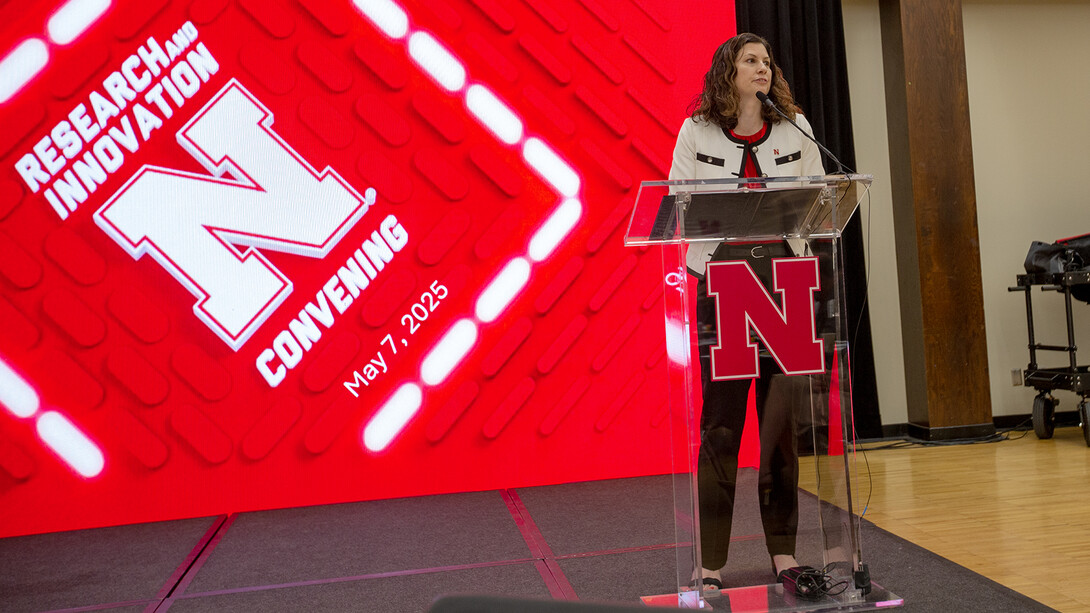
Overall, the event was well received by faculty in attendance.
Max Pierobon, Susan J. Rosowski Associate Professor in the School of Computing who studies the intersection of artificial intelligence and biological systems, described the discussion as uplifting.
“With everything happening at the national level, I came into today feeling very down,” Pierobon said. “This discussion has absolutely cheered me up about where we are going as a university. Identifying where we want to focus our attention as an institution, research-wise, gives us the necessary tools to advance our projects and prepare stronger proposals. It’s going to make us more successful overall.”
A morning session that highlighted UNL researchers involved in successful community-based collaborations also sparked new ideas among faculty — including Pierobon and Sabrina Russo, professor of biological sciences — for expanding their external engagement.
“My background and training as a scientist are in fundamental research and we apply some of our research findings to address real-world challenges,” Russo said. "But this convening and the connections with community leaders that it has enabled have me thinking even more creatively about how I can transform my own research program. I’m excited about ways to make my science more available to the public and new avenues for my science to help solve problems and address needs in our communities.”
For Pierobon and his colleagues in the College of Engineering, community engagement is expanding through a pilot program that will take them into communities to meet with city leaders, tribal officials and local administrators.
“We will travel across the state later this month to talk about our research, ask how we can help them, and invite them to be a part of the work,” Pierobon said. “The co-creation discussed today is exciting and I’m fully invested in it.”
Clemencia Rojas, an associate professor of plant pathology who studies ways to control diseases in rice crops, said she was drawn to Nebraska because UNL offered more opportunities for collaborative research. While she remains concerned about the future of research both on campus and nationwide, Rojas said she was encouraged by the discussion and the forward-thinking tone of the Research and Innovation Convening summit.
“I am deeply passionate about my research, and it was exciting to see such a large cross-disciplinary community dedicate an entire day to discussing it,” Rojas said. “My takeaway is that I’m definitely in the right place to pursue my work. I look forward to continuing the conversation around our research priorities and how I can contribute to our collective success.”
